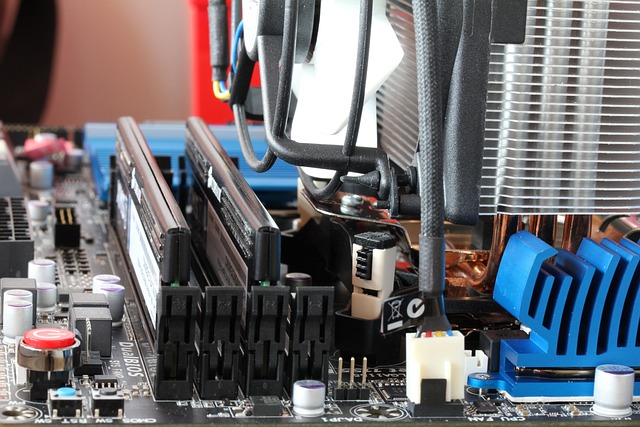What is a virtual machine? Explain the features, advantages and disadvantages!
A virtual machine is a technology that uses software to create a computer that is simulated in a single computer.
The term virtual machine has been used in various places in recent years, and many people may have heard it but do not understand its meaning.
Now that the Internet has become widespread and the use of personal computers and smartphones has become commonplace, I would like to understand virtual machines as well.
In this article, I will explain the basic information of virtual machines that people can not ask now, such as what a virtual machine is, what features it has, advantages and disadvantages. Please read it to the end to get a better understanding of virtual machines.
table of contents
- 1. What is a virtual machine?
- 2. The history of virtual machines is old
- 3. Virtual machine architecture type
- 4. Introducing typical virtual machines
- 5. Benefits of using virtual machines
- 6. Disadvantages of introducing a virtual machine
- 7. Make better business with virtual machines!
What is a virtual machine?
A virtual machine is a technology that uses virtualization technology to reproduce another computer inside a computer. I think that it is difficult to understand with this alone, so before explaining the virtual machine in detail, I will explain “virtualization” in the first place.
Virtualization is a technology that logically divides and integrates resources such as CPU, memory, and storage contained in hardware, regardless of the physical environment. In addition to virtual machines, virtualized items include virtual servers, virtual storage, virtual networks, and virtual memory.
Then, as mentioned at the beginning, the virtual machine in the main subject refers to the technology that reproduces and operates a pseudo computer using virtualization technology. Therefore, it is possible to divide one computer into multiple computers and operate them. Virtual machines also allow you to run different operating systems on a single computer at the same time. With the advent of virtual machines, things that were difficult with physical machines have become possible.
By the way, virtualization technology has been particularly developed in recent years and is being put to practical use. Due to the recent epidemic of the new virus, teleworking and teleworking are becoming widespread in Japanese companies. These new lifestyles are also expanding the needs of virtual machines.
● Differences between “host OS” and “guest OS” that are often heard in virtual machines
In explaining virtual machines and virtualization, “host OS” and “guest OS” often appear. The host OS is the OS installed in the computer that is the base of the virtual machine, and the guest OS is the OS that is installed and runs in the virtual machine environment.
For example, suppose you use a Mac computer to set up a virtual machine environment and install Windows. In this case, the base is the Mac, so the Mac side is the “host OS” and Windows is the “guest OS”. This host OS and guest OS often appear in the description of virtual machines, so it will be easier to understand the contents if you remember them.
The history of virtual machines is old
The history of virtual machines is old. Immediately after the emergence of large general-purpose machines used in the 1960s (large computer equipment used in mission-critical information systems of large corporations and government offices), virtualized machines were already in use. In addition, the origin of virtual machines is a mechanism called time-sharing, which allows users to share and use computer resources.
The era of using large general-purpose machines has shifted to an era of abundant low-priced hardware, and operations in a physically distributed environment have become the main focus. However, as the number of physical machines to be managed has increased, the operational load has increased, and virtualization technology has been attracting attention again in recent years. Many people may have come to hear the term virtual machine a lot lately, but it’s a technology that has been needed for a long time and is regaining attention with the times. ..
Virtual machine architecture type
There are three main types of architectures (basic software or hardware design concepts) for virtual machines: “hosted”, “hypervisor”, and “container”. I will explain the differences between them.
● Hosted virtual machine
The host type is a method to realize a virtual machine by installing an OS such as Windows or Linux on a physical machine and installing an application that becomes virtual software in it. The advantage of the host type is that it is easy to install because it can be easily installed on a computer or server that is already in use.
Typical host-type software is as follows.
- VMware Player
- Microsoft Virtual PC
- Oracle Virtual Box
● Hypervisor type virtual machine
The hypervisor type is a method to realize a virtual machine by installing software directly on the server without using the host OS. Currently, the hypervisor type is pervading as the most mainstream method. The advantage is that the processing speed of the virtual machine can be minimized because the host OS is not required and the hardware can be controlled directly.
Typical hypervisor type software is as follows.
- VMware vSphere ESXi
- Citrix XenServer
- Hyper-V
- KVM
● Container type virtual machine
The container type is a method in which a host OS such as Windows or Linux is installed on a physical machine, and container management software is installed and used. The container type is called the container type because it includes the application and software together with the execution environment as a container image (container template file). In the case of the container type, the container image and the software itself are lightweight.
Typical container-type software is as follows.
- Docker
Introducing a typical virtual machine
Virtual machines are offered by various companies. Among them, we will introduce a typical virtual machine, so please refer to it.
● Oracle Virtual Box
One of the most major virtual machines is the “Virtual Box” provided by Oracle, which has become a popular virtual machine in the world.
The feature is that it contains indispensable functions for utilizing virtual machines such as “snapshot”, “seamless mode”, “shared folder”, and “clipboard sharing”. It can be said that many people use “Virtual Box” because it is a virtual machine that can meet various needs.
● Microsoft Virtual PC
The virtual machine software provided by Microsoft is “Microsoft Virtual PC”. Originally, it was a product developed by Connectix in the United States, and was initially released as virtualization software that can use “Windows” on Apple’s “Mac OS X”. After that, the Windows version was also sold, but with the acquisition of the Connectix by Microsoft, the Windows version is now available free of charge.
● KVM
KVM is an open-source virtualization machine built into Linux. KVM allows you to transform Linux into a hypervisor. This allows the underlying computer to run multiple independent virtual environments.
By the way, KVM is installed as standard if the version of Linux is Linux 2.60.20 or later. Therefore, if you are using Linux and want to use a virtual machine, why not try using KVM once.
Benefits of using virtual machines
The following benefits can be obtained by utilizing virtual machines.
- Cost reduction is possible
- You can rest assured in terms of security
- Can be confirmed on multiple OS
● Cost reduction is possible
By utilizing virtual machines, hardware such as physical personal computers and servers becomes unnecessary. In addition, the presence of physical hardware continuously incurs large maintenance costs, such as the purchase of additional equipment and the need for maintenance. In that respect, virtual machines can run multiple systems on one machine, reducing the number of physical hardware and minimizing costs. is.
● Security is also safe
It is possible to run multiple services on a single computer without virtualization. However, in the unlikely event that a security hole is breached, everything can be hijacked. Virtual machines can mitigate those security risks. However, since both the host OS and guest OS must take security measures, it does not mean that no measures need to be taken.
By taking appropriate security measures to make security solid, you will be able to utilize virtual machines with greater peace of mind.
● Can be confirmed on multiple OSs
By utilizing virtual machines, you can check the operating status of the system on multiple OSs. Normally, it is necessary to prepare a personal computer or server according to the required OS, but if it is a virtual server, it is not necessary to prepare physical hardware if you use a guest OS. Just install it as a guest OS when you need it, and you can check the system operating status on multiple OSs, which is convenient because you can save the trouble of preparation.
Disadvantages of introducing a virtual machine
You should be aware of the following disadvantages of deploying virtual machines.
- Inferior to the physical environment
- It is necessary to secure human resources who have acquired virtual technology
- The cost will be higher depending on the situation
● Performance is inferior to the physical environment
Virtual machines can perform poorly compared to their physical environment. Therefore, it is undeniable that there is some instability when running applications that require strict performance. If you need a workplace and stable performance, it may be better to use a physical environment. Therefore, when using a virtual machine, consider what kind of application you will use and select the most suitable one.
● It is necessary to secure human resources who have acquired virtual technology.
To utilize a virtual machine, you need more than usual knowledge and skills. For stable and safe operation, human resources with specialized knowledge and skills in virtualization are required. Depending on the company, it may be necessary to secure new human resources to introduce virtual machines, or it may be necessary to have educational costs to educate the target audience and acquire knowledge and skills.
● Costs increase depending on the situation
When installing a virtual machine, if it is performed in an environment that is too small, the installation cost and operation cost may increase. If you are deploying a virtual machine, it may not be worth the cost of deploying it without a certain amount of scale, so you need to perform a simulation to see if you really should deploy it. In addition, operating costs can be high in extremely large environments. Either way, before deploying a virtual machine, be sure to do simulations and quotes to reaffirm whether it’s the best cost advantage.
Use virtual machines for a better business!
With the introduction of virtual machines, one computer can run multiple computers. While there are many advantages to introducing and utilizing it, there are also disadvantages and precautions, so it is important to thoroughly understand it before considering it.
However, the introduction of virtual machines has become an advanced technology in many companies. If you have a solid knowledge of the advantages and disadvantages and can make good use of them, you will not only be able to reduce costs, but you will also be able to save time and effort in terms of management and operation.
In addition, by introducing a virtual machine, the business environment can be changed and various possibilities can be expanded. Because it is a virtual machine that has been so much talked about and utilized, why not consider introducing it if necessary.
If you ever want to know about similar things, check out the Facebook page Maga Techs






